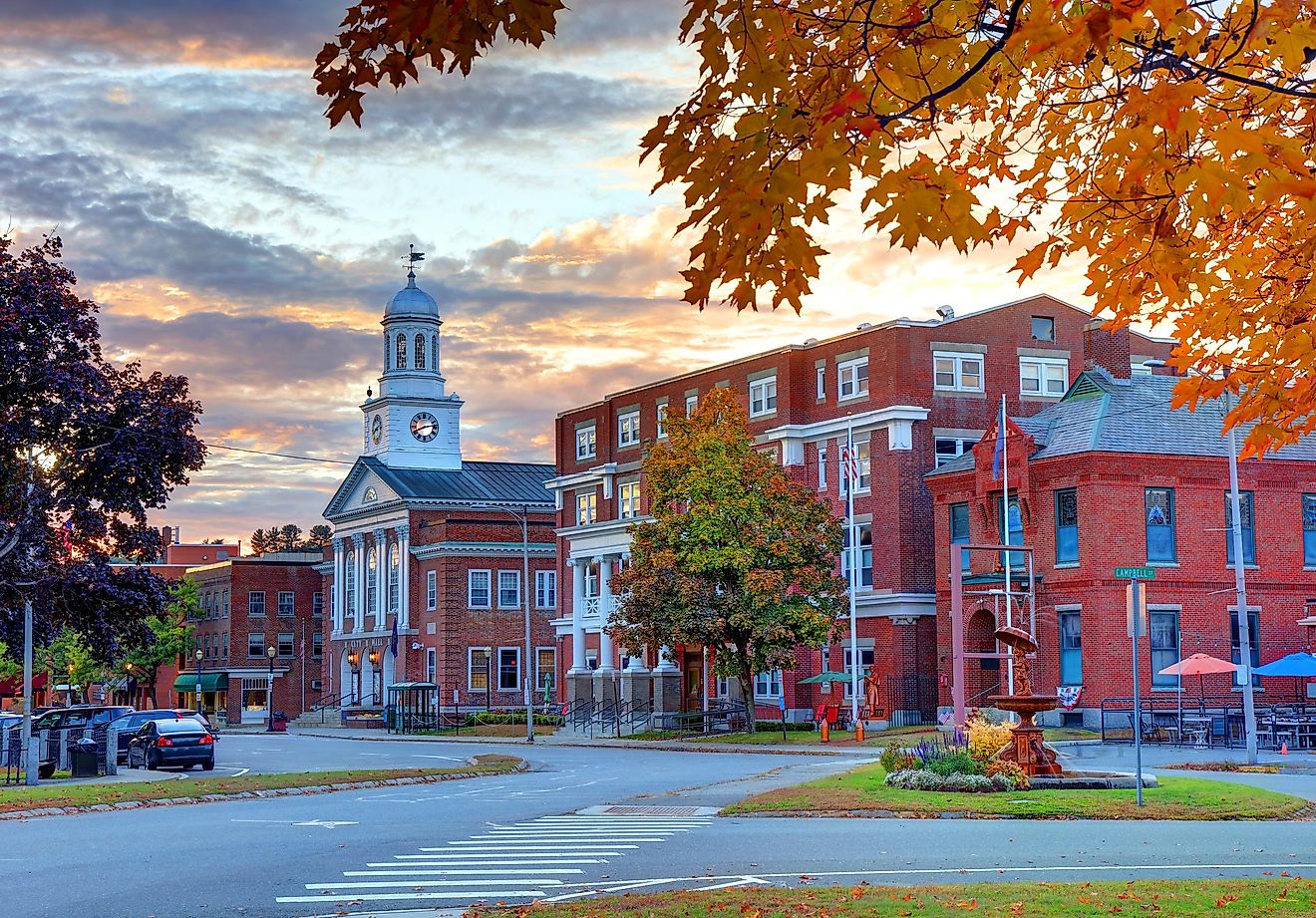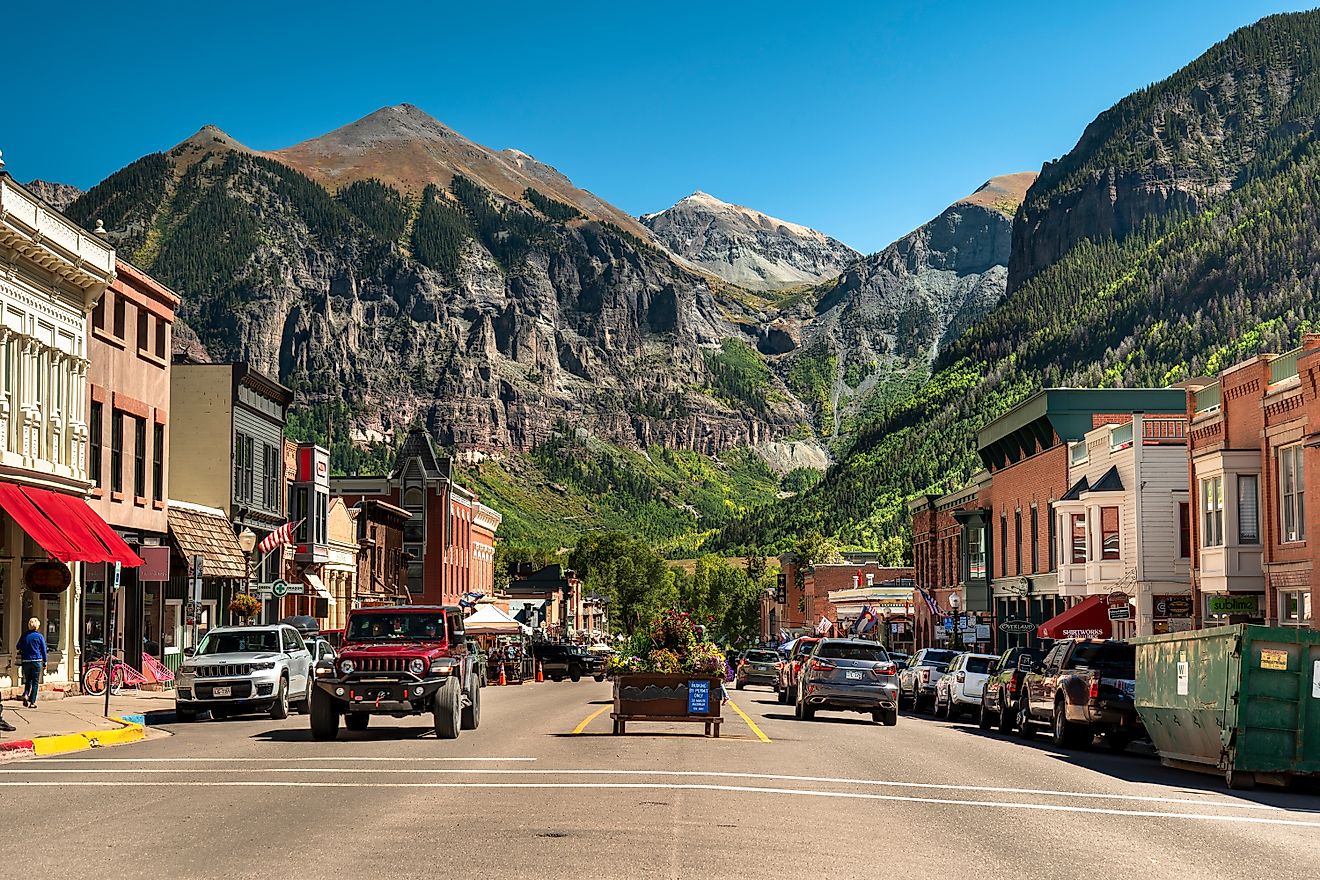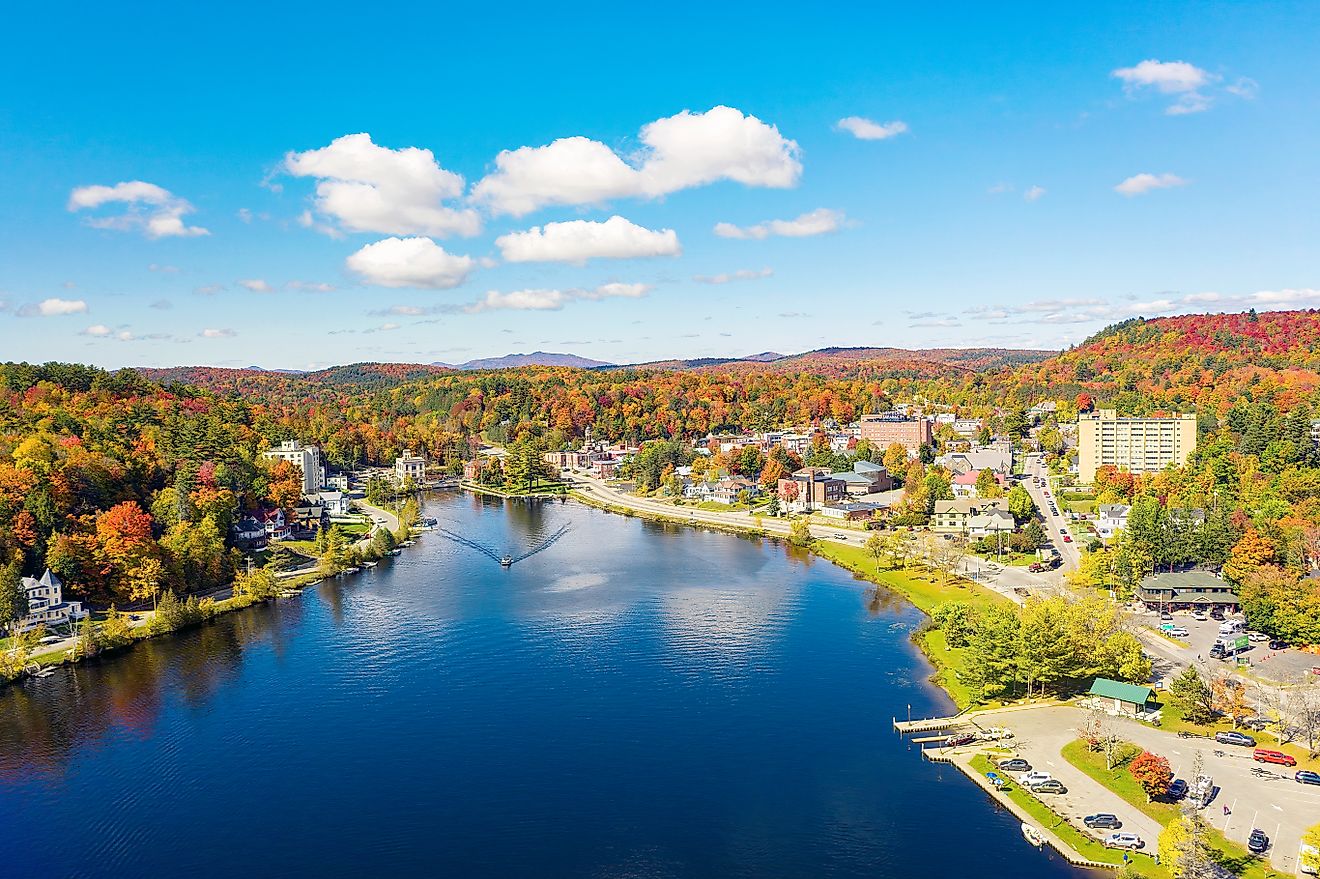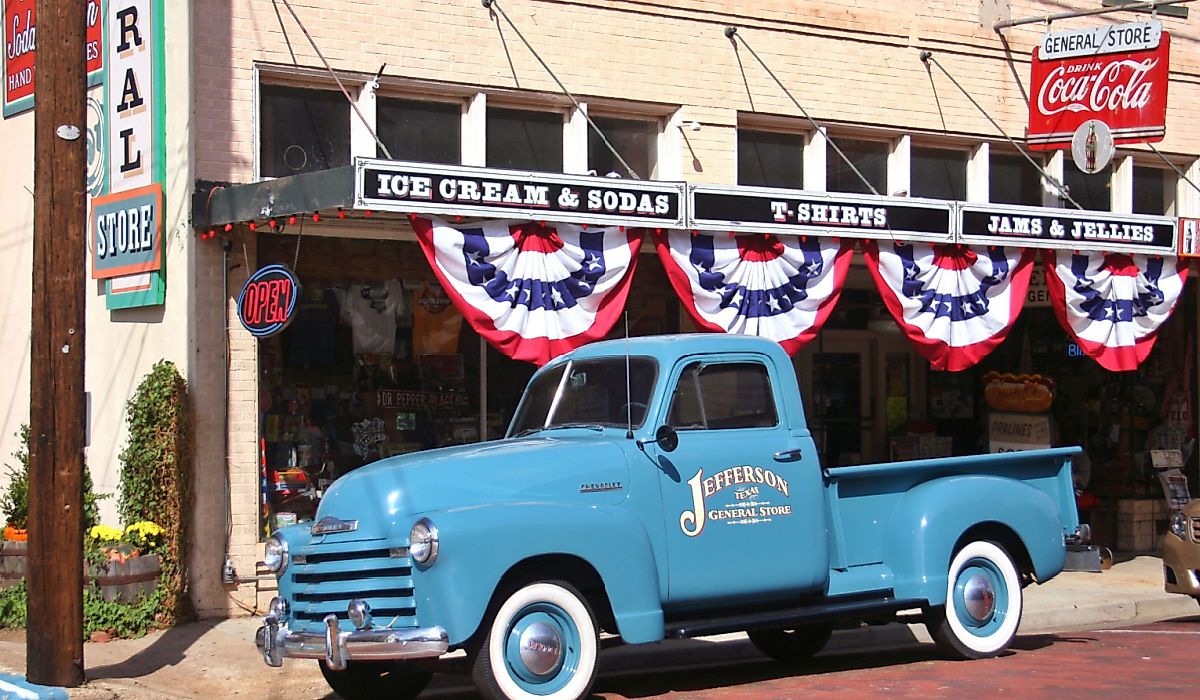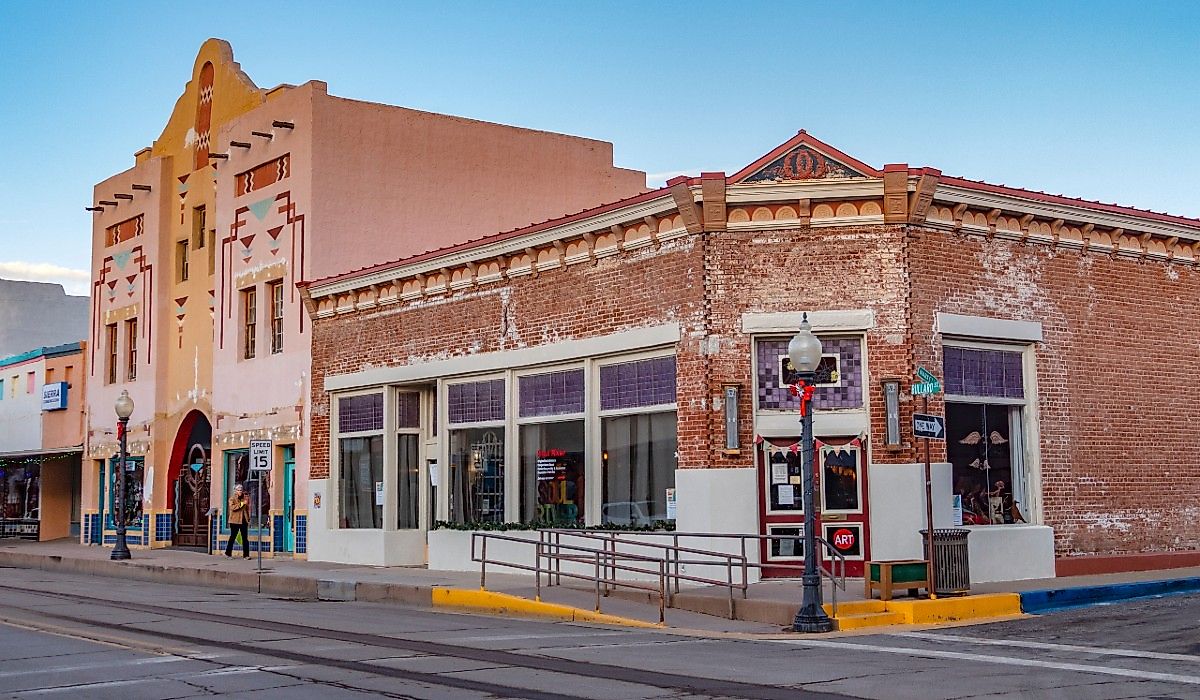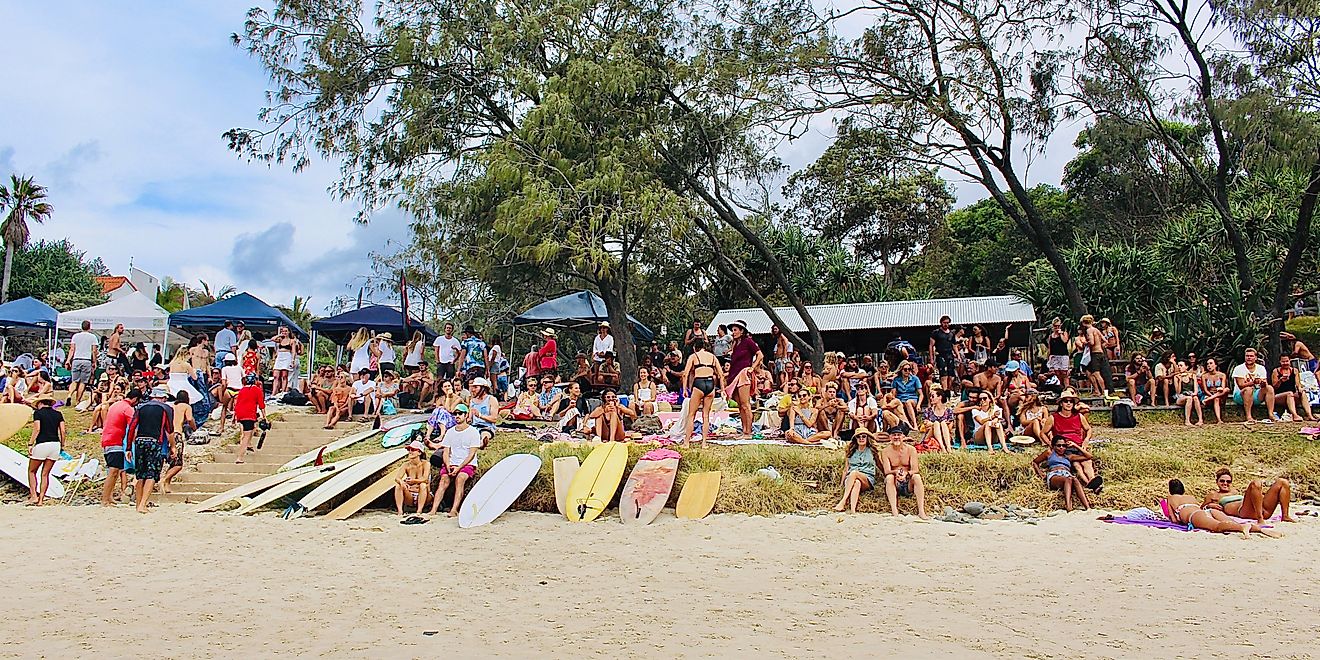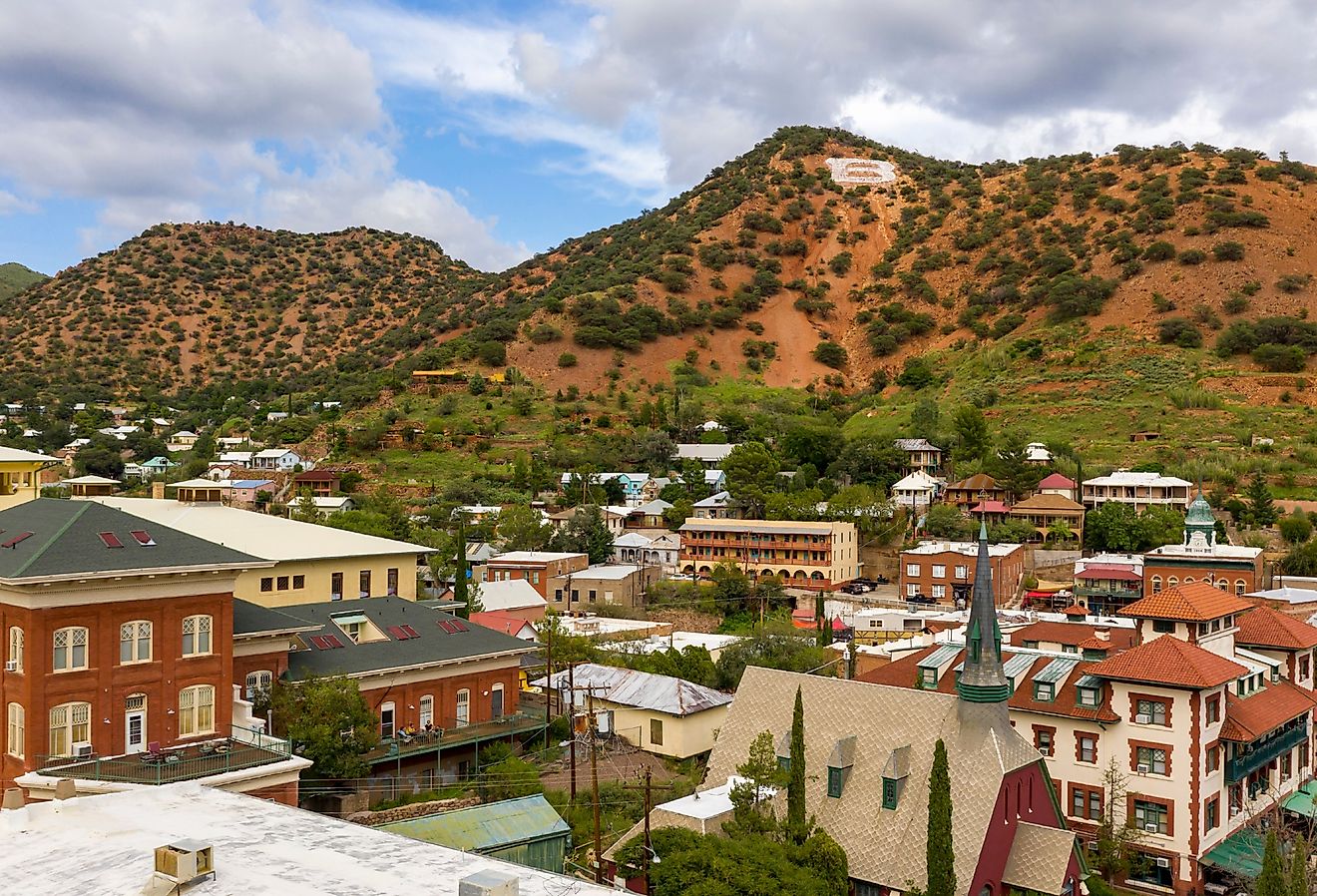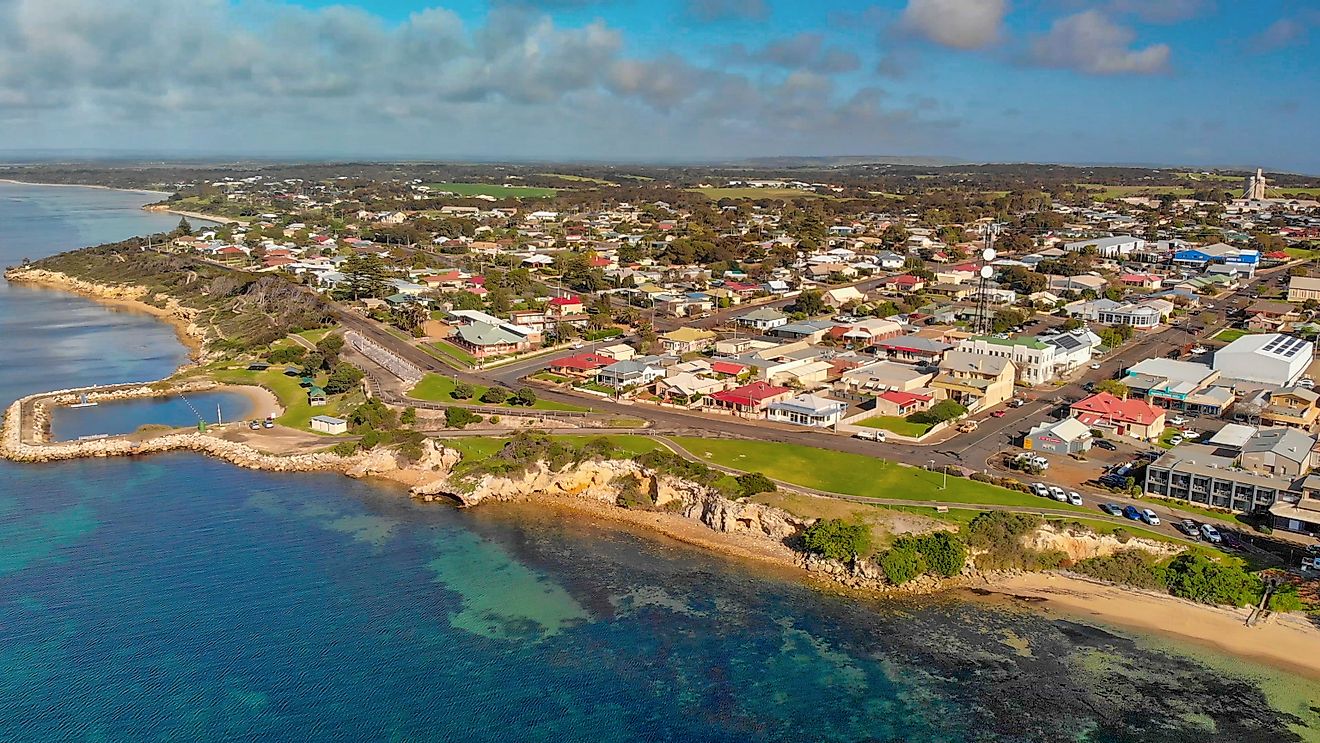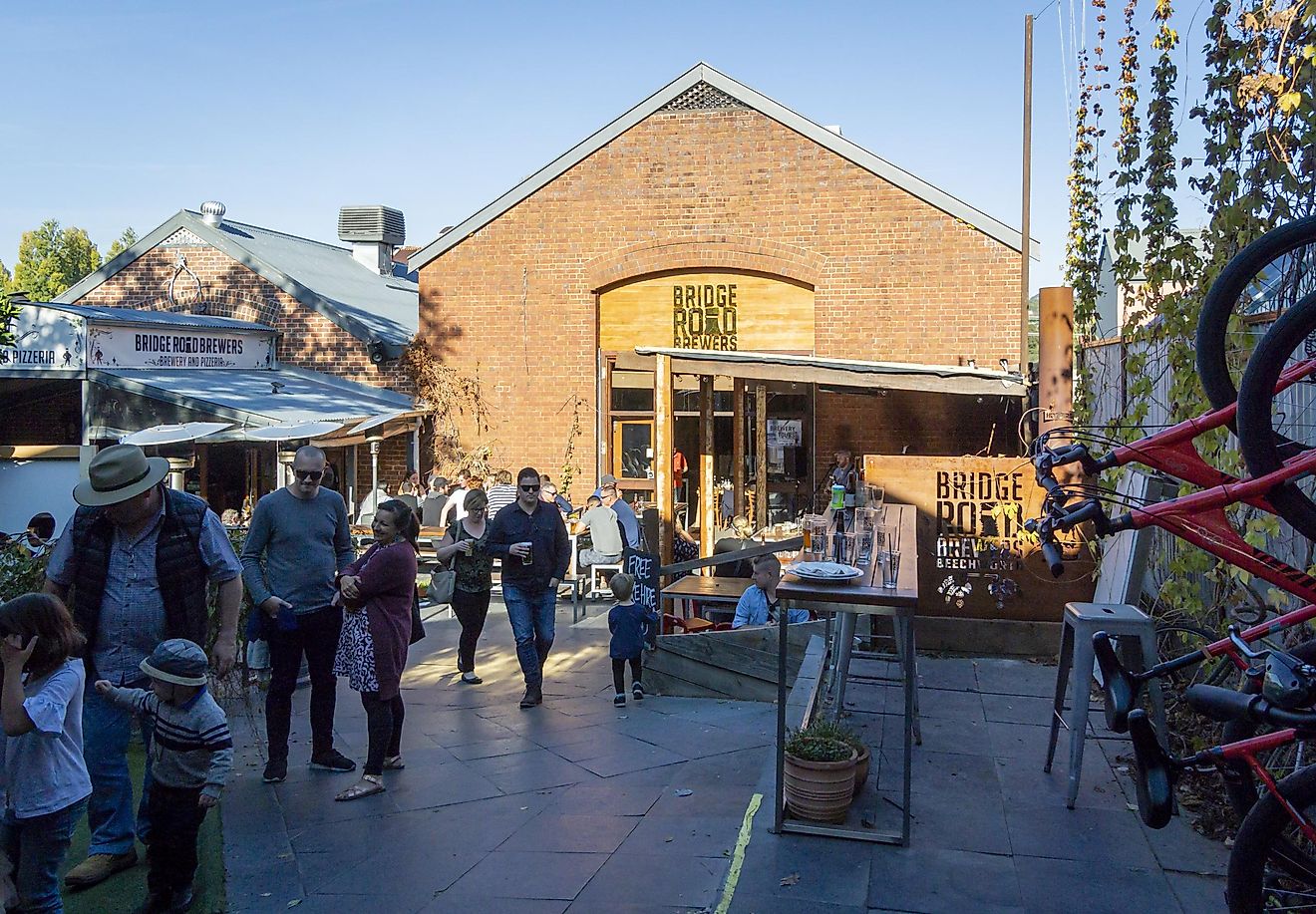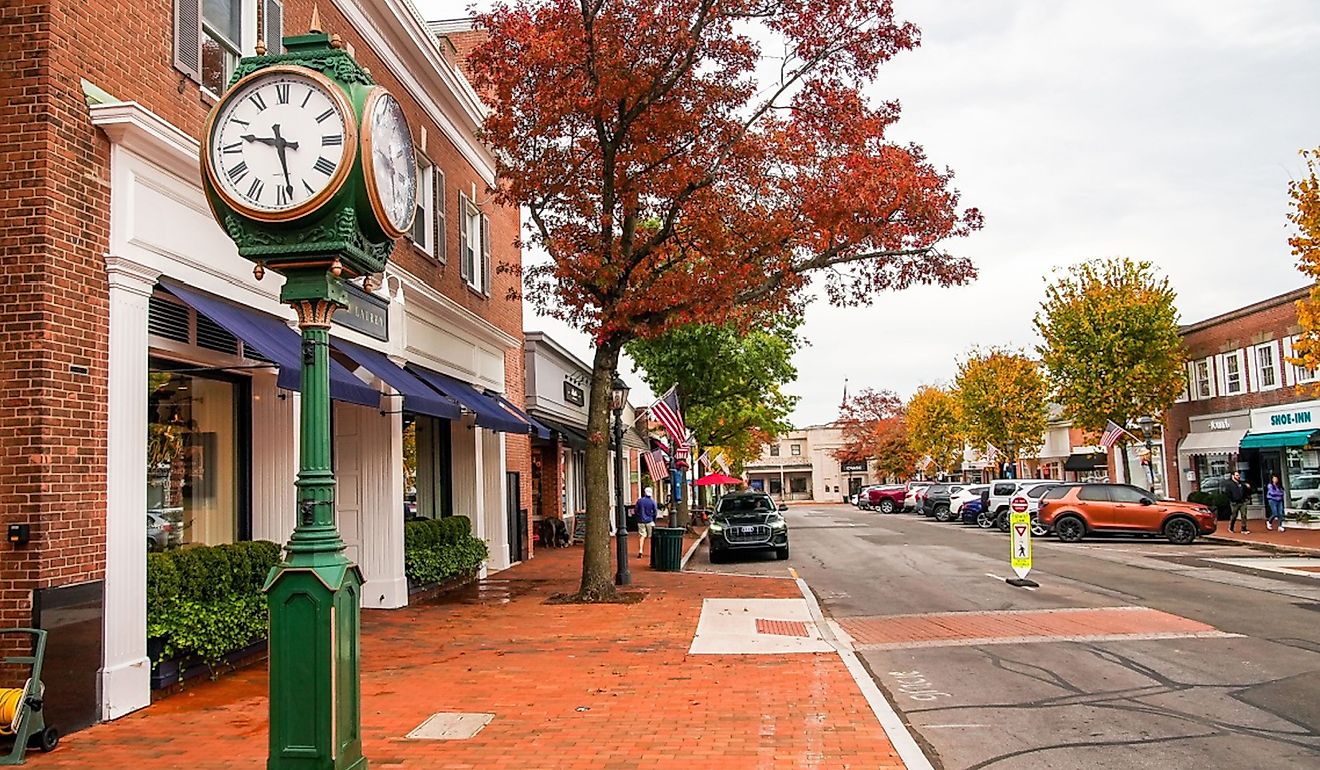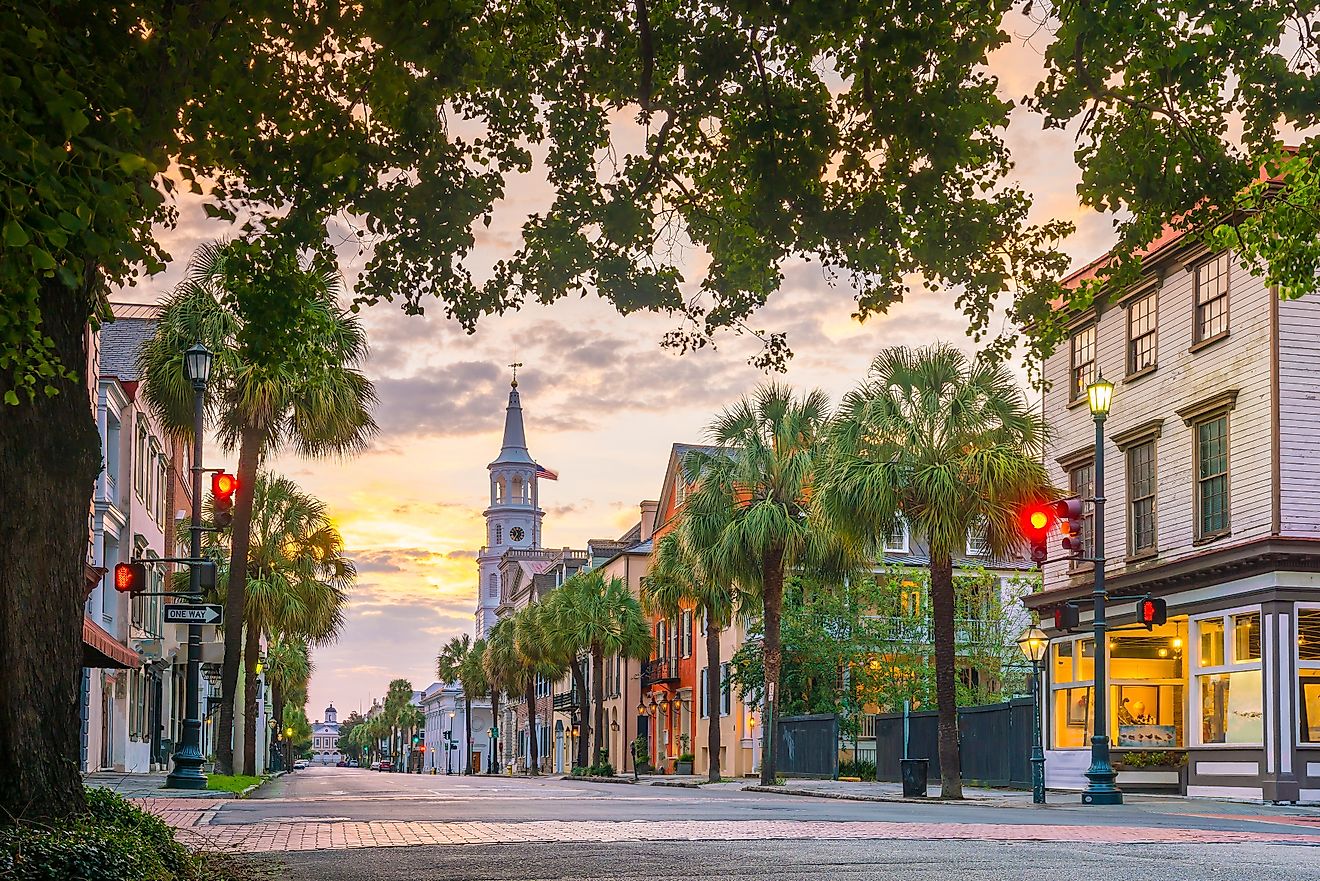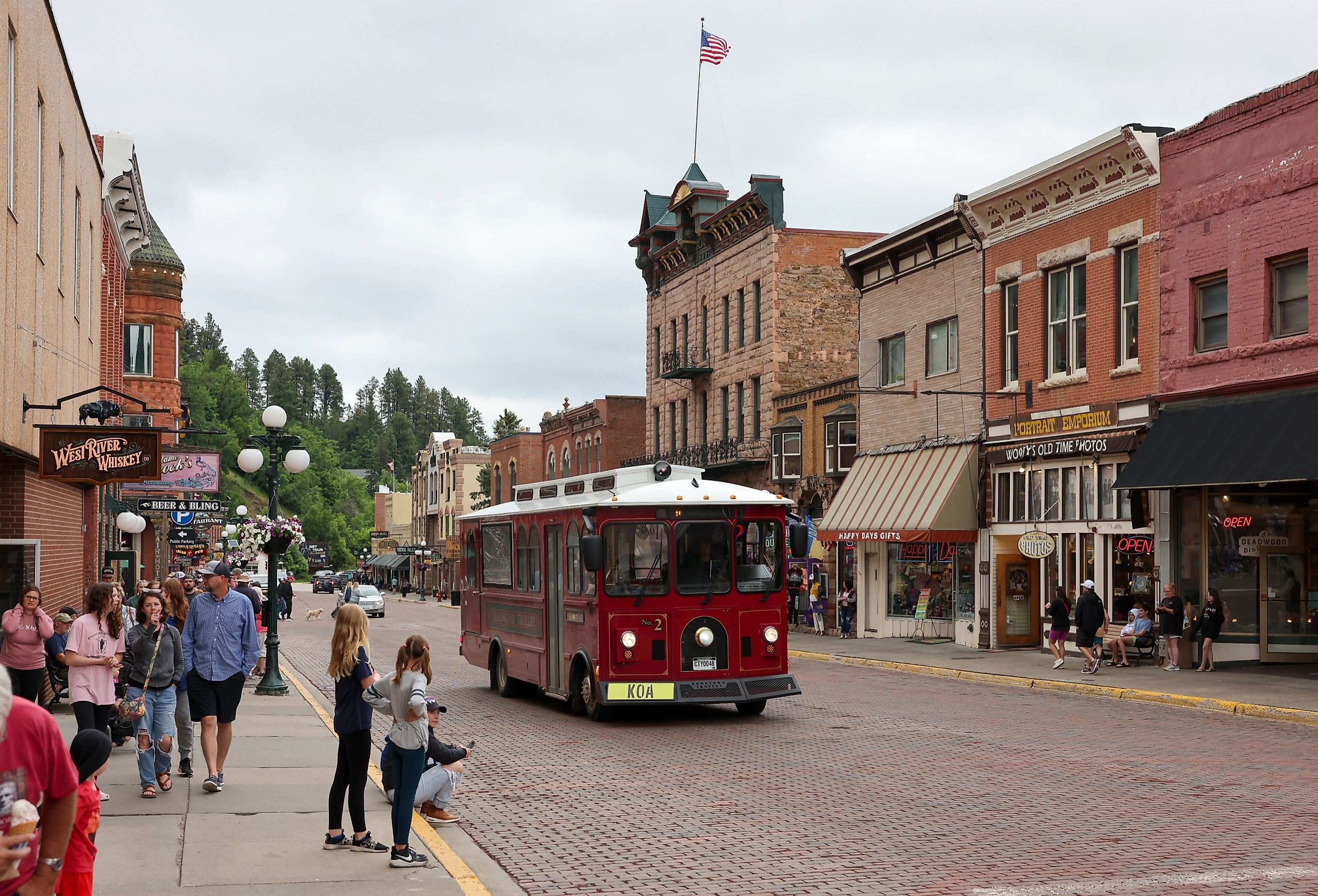
8 of the Most Charming Small Towns to Visit in South Dakota
South Dakota, located in the Midwestern region of the United States, is home to the Mount Rushmore National Memorial, which has the carved faces of four US presidents, symbolizing the nation's democracy. The state's geography spans from prairies in the east to the Badlands and Black Hills in the west. The state played a role in the American frontier era and is steeped in Native American history, particularly that of the Lakota, Dakota, and Nakota Sioux tribes.
South Dakota is punctuated by charming towns worth visiting that echo the state's tapestry of history and natural beauty. Here are the top picks.
Custer
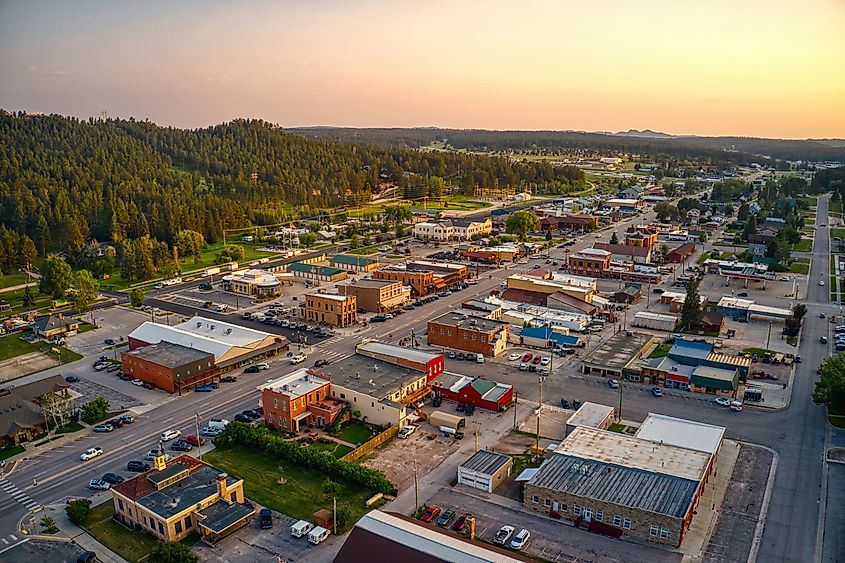
Custer, South Dakota, is a town in the southern Black Hills. The town is surrounded by national forests, granite peaks, and clear mountain lakes—a haven for nature lovers. The town's history dates back to the late 19th century, named after Lieutenant Colonel George Armstrong Custer, and it played a role in the Black Hills Gold Rush. This era is reflected in the town's architecture; many buildings have Victorian and frontier design elements.
For those visiting Custer, Custer State Park is one of the largest state parks in the United States and has a prairie and mountain landscape. It is home to a herd of free-roaming bison and the scenic Wildlife Loop Road. Jewel Cave National Monument is another nature attraction, being the third longest cave in the world. Visitors can discover an underground maze of chambers and passageways adorned with calcite crystals. Lastly, the Crazy Horse Memorial is a testament to the Native American heritage of the region. Currently under construction, it aims to be the world's largest mountain carving, dedicated to the Lakota leader Crazy Horse.
Deadwood
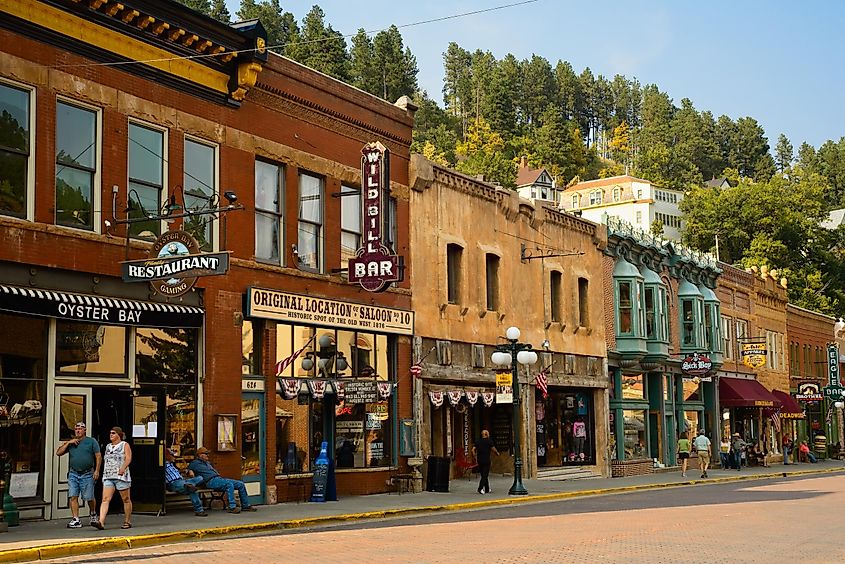
Deadwood is a town that encapsulates the spirit of the Wild West, nestled in the northern Black Hills region. It is marked by steep, wooded hillsides and narrow valleys. Established in 1876 during the Black Hills Gold Rush, Deadwood quickly gained a reputation as a lawless frontier town, which attracted a mix of prospectors, outlaws, and entrepreneurs. Structures such as the historic Adams House and the Bullock Hotel are windows into the lives of Deadwood's early inhabitants.
The Mount Moriah Cemetery, situated on a hill overlooking the town, is the final resting place of Wild West figures such as Wild Bill Hickok and Calamity Jane. The cemetery also has views of Deadwood. Nearby, the George S. Mickelson Trail has over 100 miles of trails that run through the Black Hills for hiking, biking, and horseback riding. The trail is accessible for all skill levels. Lastly, Adams Museum dives into Deadwood’s history, with exhibits that include artifacts from the Gold Rush era, the lives of the town's notable figures, and the culture of the Lakota people.
Keystone
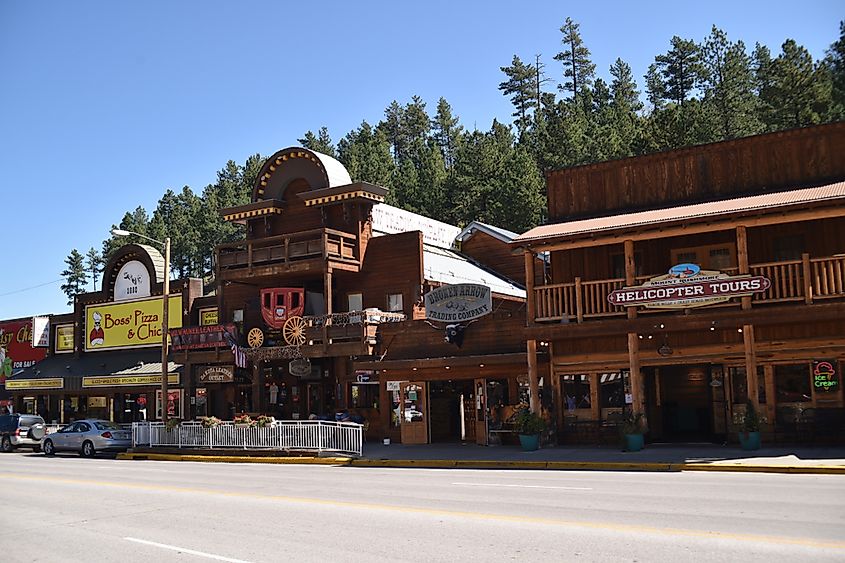
Keystone, South Dakota, is another town in the Black Hills region. Its geography includes rolling hills, pine-covered mountains, and rocky terrains. Keystone's history is deeply entwined with the Gold Rush of the late 19th century, which brought prospectors and miners to the area. This period of rapid growth and development is reflected in the town's architecture; several buildings and structures reflect the narrative of a bustling mining town.
The Mount Rushmore National Memorial is located a short drive from Keystone. Educational exhibits and a walking trail provide a closer look at the craftsmanship involved in its creation. Within Keystone, Big Thunder Gold Mine educates visitors on the gold mining history that shaped the region. Visitors can tour the mine, learn about the gold extraction process, and even pan for gold—a hands-on historical experience. For a natural escape, Horse Thief Lake, located nearby, has waters surrounded by forested hills, ideal for hiking, picnicking, and reflection.
Pierre
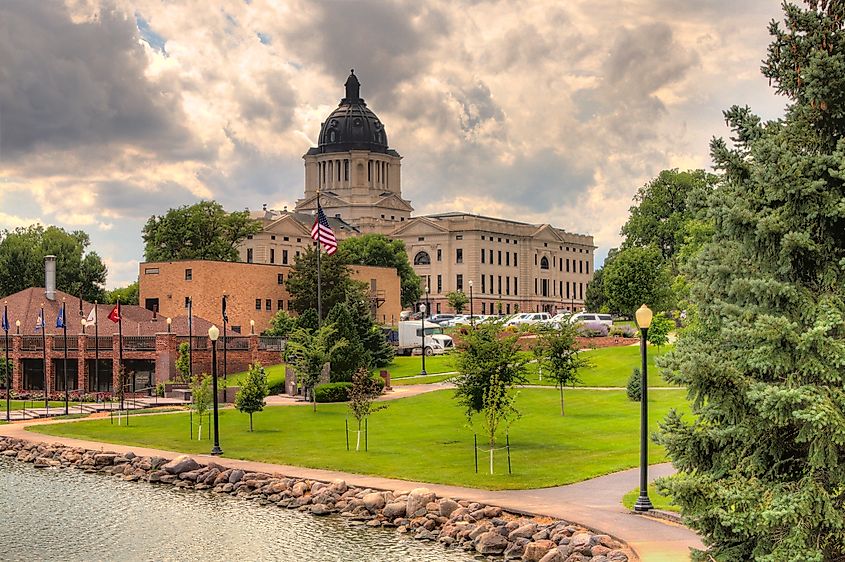
Pierre, South Dakota, is the second-smallest state capital in the United States. It is located on the banks of the Missouri River, which bisects the state into two distinct geographical regions. Its location has made it a crossroads for Native American tribes, European explorers, and American pioneers. Founded in 1880, Pierre's history revolves around the westward expansion, the fur trade, and the railroad development, all of which have shaped its cultural landscape.
The South Dakota State Capitol educates visitors on the state's legislative process. It has maintained grounds and a view of Capitol Lake. Inside, the building is adorned with murals, historical displays, and the stained glass of its rotunda. Meanwhile, the Cultural Heritage Center is a comprehensive repository of South Dakota's history, from its early Indigenous peoples to present-day communities. Through interactive exhibits, artifacts, and art, visitors learn about the cultural, social, and economic developments that have shaped the state.
Just outside Pierre, Farm Island Recreation Area is for hiking, swimming, and wildlife viewing along the Missouri River. This state park also hosts educational programs on the local ecosystem.
Vermillion
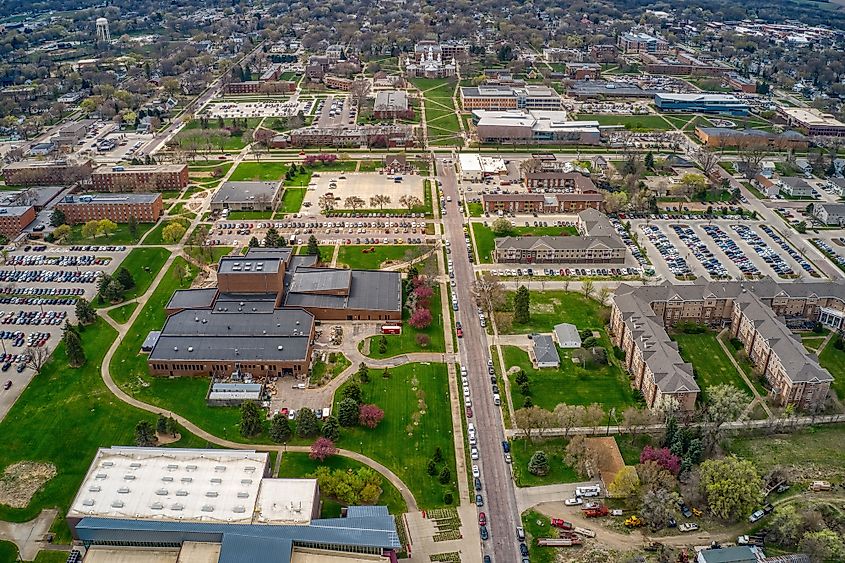
Vermillion is set along the Missouri River in the southeastern corner of the state. Founded in 1859, the town is rooted in the traditions of the Yankton Sioux Tribe and early European settlers. The town is home to the University of South Dakota, established in 1862, which contributes to Vermillion's architectural diversity, including the Old Main, a structure that combines Richardsonian Romanesque and Queen Anne styles.
The National Music Museum, located on campus, houses over 15,000 American, European, and non-Western instruments from various periods. This museum is an in-depth look at the evolution of musical instruments and their impact on cultures worldwide. Another attraction is the Spirit Mound Historic Prairie, a short drive from Vermillion. Famed by the Lewis and Clark Expedition, Spirit Mound has views of the prairie landscape and hiking trails that explore the local flora and fauna. Back in town, The Austin-Whittemore House is a window into the daily lives of its early settlers, with period furnishings and local artifacts. This home is managed by the Clay County Historical Society,
Chamberlain
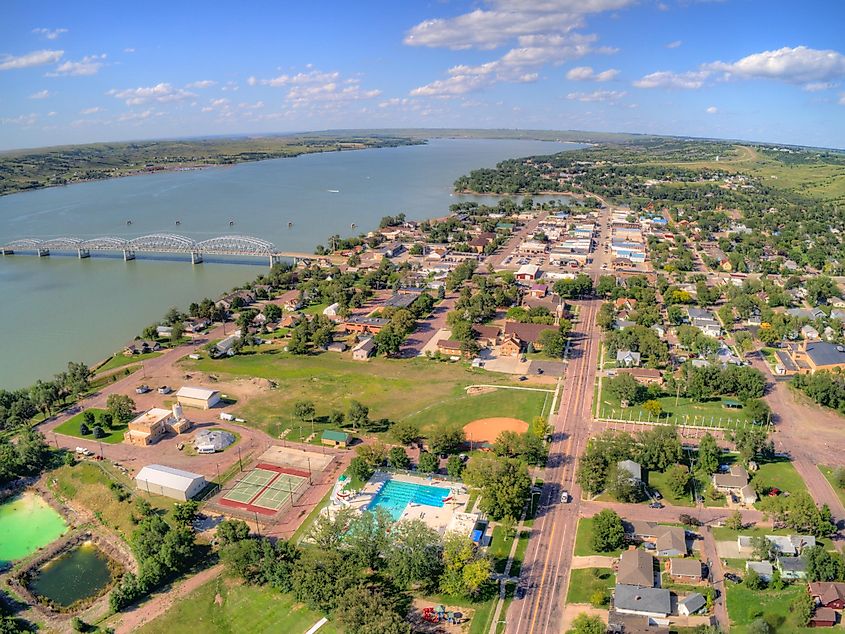
Chamberlain, South Dakota, is also perched on the banks of the Missouri River and is a gateway to the western plains. The town's geography, with river bluffs and grasslands, evidences the diverse ecosystems of South Dakota. Established in the late 19th century, Chamberlain was a trading and transportation hub, particularly due to its location. Once a meeting point for Native American tribes, Chamberlain has evolved into a modern community that respects its Indigenous beginnings.
The Akta Lakota Museum & Cultural Center houses exhibits, including art, artifacts, and interactive displays, that educate guests on the Lakota culture and Native American history in the region. Just outside the town, the Lewis and Clark Interpretive Center has views of the Missouri River. Exhibits and outdoor sculptures here detail the expedition of Lewis and Clark, their interactions with Native American tribes, and the lasting impact of their exploration. Lastly, The Dignity Statue is a sculpture that stands as a tribute to the Indigenous peoples of the Great Plains. Representing a Lakota woman holding a quilt, the statue symbolizes the strength, dignity, and heritage of Native American cultures.
Hot Springs
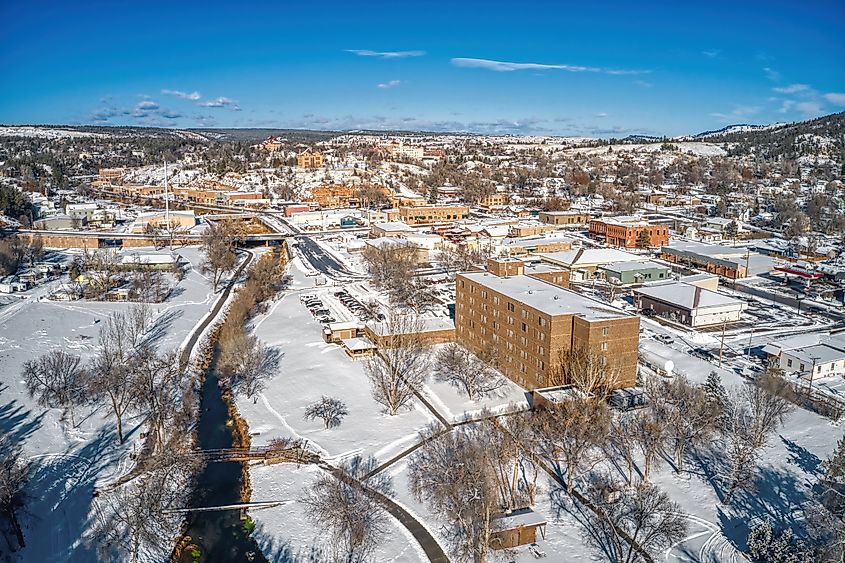
Hot Springs, South Dakota, is a town known for its warm, mineral-rich waters, from which its name is derived. Situated in the southern part of the Black Hills, the town is marked by hills, river canyons, and the natural hot springs. Its nature has been a draw for centuries, initially for the Native American tribes and later for settlers and tourists. Hot Springs dates back to the 19th century when it was established as a spa and resort town. Sandstone buildings line the town's streets.
The Mammoth Site in Hot Springs is an active paleontological dig site, and museum that has the largest concentration of mammoth remains in the world. This Ice Age attraction gives visitors a look into the area's prehistoric past, with guided tours and educational exhibits that appeal to both young and old. Nearby, Wind Cave National Park has one of the world’s longest and most complex caves. Above ground, the park's mixed-grass prairie and ponderosa pine forest attracts diverse wildlife, including bison, elk, and pronghorns, making it a place for hiking and wildlife viewing. Finally, The Fall River Freedom Trail is a walking path alongside the Hot Springs' warm water river, offering views and access to several of the town's historical buildings.
Lead
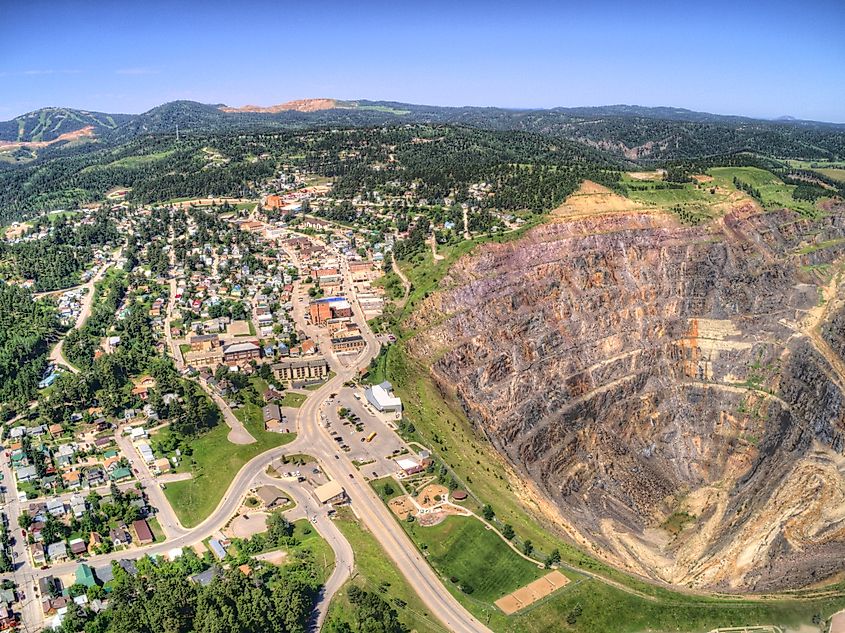
Lead, South Dakota, sits at an elevation that makes it one of the highest cities in the United States, offering views of the surrounding forested hills and rugged landscapes. Lead's history is indelibly linked to the Homestake Mine, once the largest and deepest gold mine in North America. It operated for over a century, from 1876 until its closure in 2002. Many of Lead's buildings, including the historic Homestake Opera House and the Hearst Library, reflect the prosperity the mining industry brought to the area, with early 20th-century architecture with detailed facades and interiors.
The Black Hills Mining Museum in Lead gives an immersive look into the town's mining past, with guided tours that take visitors through recreated mine tunnels and exhibits on gold mining processes. Another significant landmark is the Sanford Lab Homestake Visitor Center, which sits atop the former Homestake Mine. The center offers educational displays on the mine's history and its new role as an underground science and research facility, along with views into the open cut of the mine. Just a short drive from Lead, Spearfish Canyon has limestone cliffs, cascading waterfalls, and lush vegetation. This scenic byway provides numerous hiking trails, picnic areas, and viewpoints.
South Dakota, with its mosaic of historical landmarks, natural beauty, and cultural depth, offers a unique American experience. Amidst this grandeur lie charming towns that narrate a more intimate story of South Dakota's heritage and nature. For instance, Hot Springs is notable for The Mammoth Site, an active paleontological dig housing Ice Age fossils. Deadwood, steeped in Wild West history, offers tours of its historic downtown and reenactments of its gold rush era events. Custer, the gateway to the Black Hills, gives access to Custer State Park's wildlife and scenic drives, while Keystone acts as a base for exploring Mount Rushmore. These charming towns provide tangible connections to South Dakota, making them ideal for visitors seeking educational and scenic experiences.
